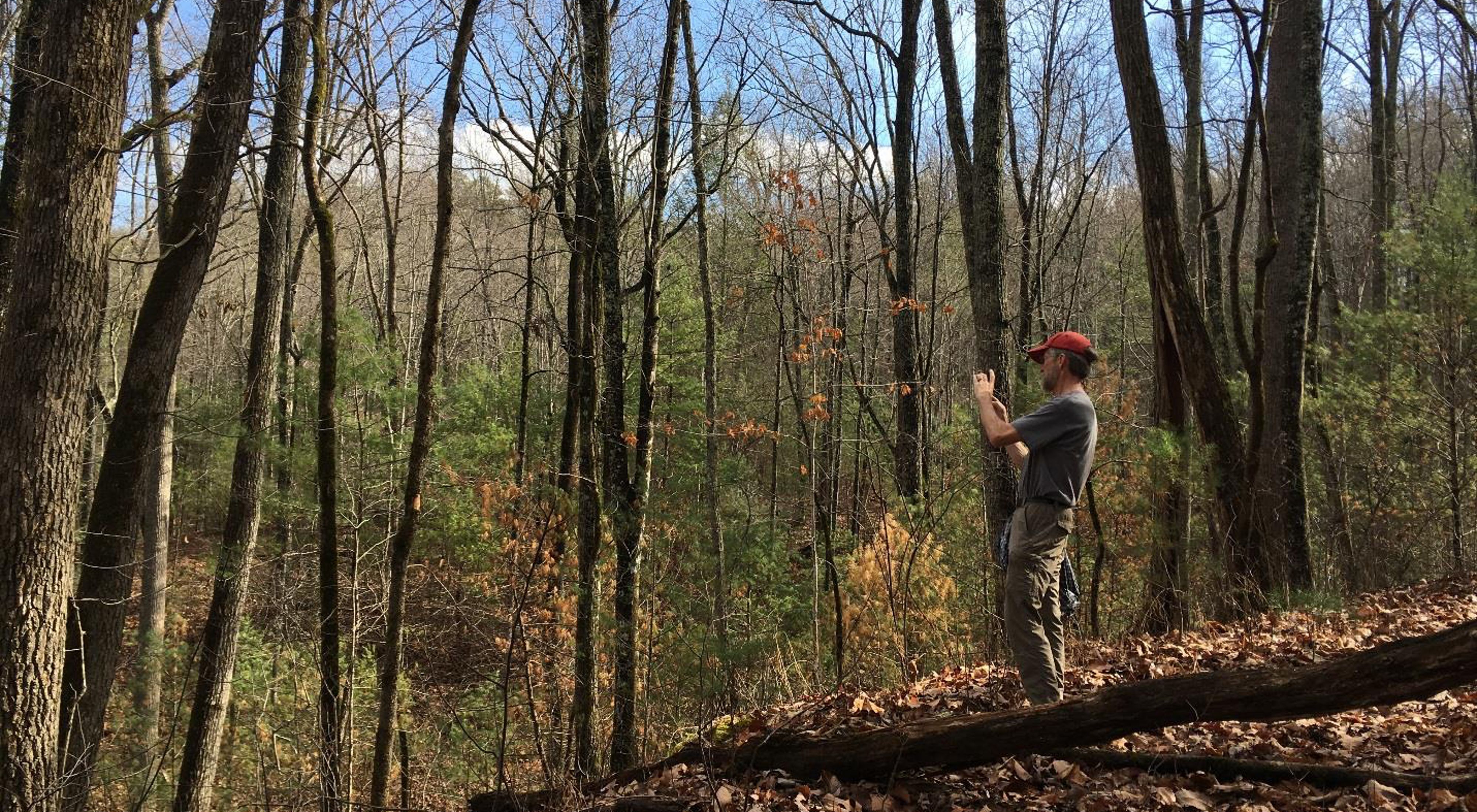Gaining New Ground in North Georgia
A family legacy of conservation continues with the protection of forests in Georgia's Southern Blue Ridge.
When science, urgency and opportunity collide, it’s time to take action. That’s what’s unfolding in the mountains of North Georgia, where The Nature Conservancy has acquired 240 acres that we will ultimately transfer to the Chattahoochee National Forest.
Located in the Southern Blue Ridge Mountains and Upper Conasauga River basin, the two tracts that comprise this project are almost surrounded by the national forest and are high priorities for protection by the Conservancy and the United States Forest Service.
“We’re very excited about this project,” says State Director Deron Davis. “It’s been a few years since the Conservancy has protected land in North Georgia. But thanks to a new revolving fund, this project marks the first of many more land protection projects in North Georgia.”
The project is also exciting for what it protects, Davis says. “Protecting the forest here in the upper reaches of the Conasauga headwaters helps safeguard an incredible diversity of life in the lands and waters of this remarkable part of Georgia.” Beginning deep in the Chattahoochee Forest’s Cohutta Wilderness, the Conasauga River flows north through steep terrain in the Cherokee National Forest in Tennessee, then back into Georgia, splitting Murray and Whitfield counties.
The Conasauga is one of the few remaining free-flowing rivers in the Coosa River system and the southeastern United States, and is widely known for its exceptional diversity of fish, mussels, snails and crayfish.
Quote: Deron Davis
Protecting the forest here in the upper reaches of the Conasauga headwaters helps safeguard an incredible diversity of life in the lands and waters of this remarkable part of Georgia.
The Conasauga basin holds some 90 native fish species—or 10 percent of North America’s fish fauna—and more than a dozen of those species are rare or endangered. The Conasauga has historically supported at least 44 mussel species, but only about 20 species remain. Then, there are the plants. The Southern Blue Ridge supports nearly 4,000 plant species, of which 400 are considered rare and an astounding 250 are found nowhere else in the world.
Challenge in the Chattahoochee
All of this diversity occurs in an area facing tremendous pressure, near some of the country’s fastest-growing urban areas. As the population expands, the Southern Blue Ridge plays an increasing role in meeting basic human needs and securing the region’s continued economic well-being. The Chattahoochee and Cherokee National Forests play a big role in protecting the Conasauga’s ecologically rich forests and rivers. Protecting these tracts helps ensure those habitats will stay intact and won’t be fragmented by roads or other development.

A Family Legacy
The Howell family has long known the value of these lands, their forests and streams. Starting with Dr. Harvey Howell in the 1970s, they wanted the tract’s forests—and the region—to be managed in a sustainable manner, to ensure long-term protection of its lands and waters. Conservancy science has identified the larger forest block around the tracts as high priority for long-term resilience for species in a changing climate. Think of this part of the Southern Blue Ridge as a “natural stronghold,” where forests, topography and other physical settings combine to allow plants and animals to move and rearrange as climate conditions shift. Katie Owens, who directs the Conservancy’s Coosa River Basin Program, compares rivers and tributaries to arteries and capillaries.
“For an artery to be healthy, we can’t have blockages,” Owens says. “For a river to do well, its tributaries must provide clean water and nutrients downstream. Conserving the Howell tracts is critical to the long-term health of the Conasauga watershed because it provides protection to headwater tributaries, which are instrumental in providing pristine water quality that house an incredible diversity of fish, mussels and snails.”
